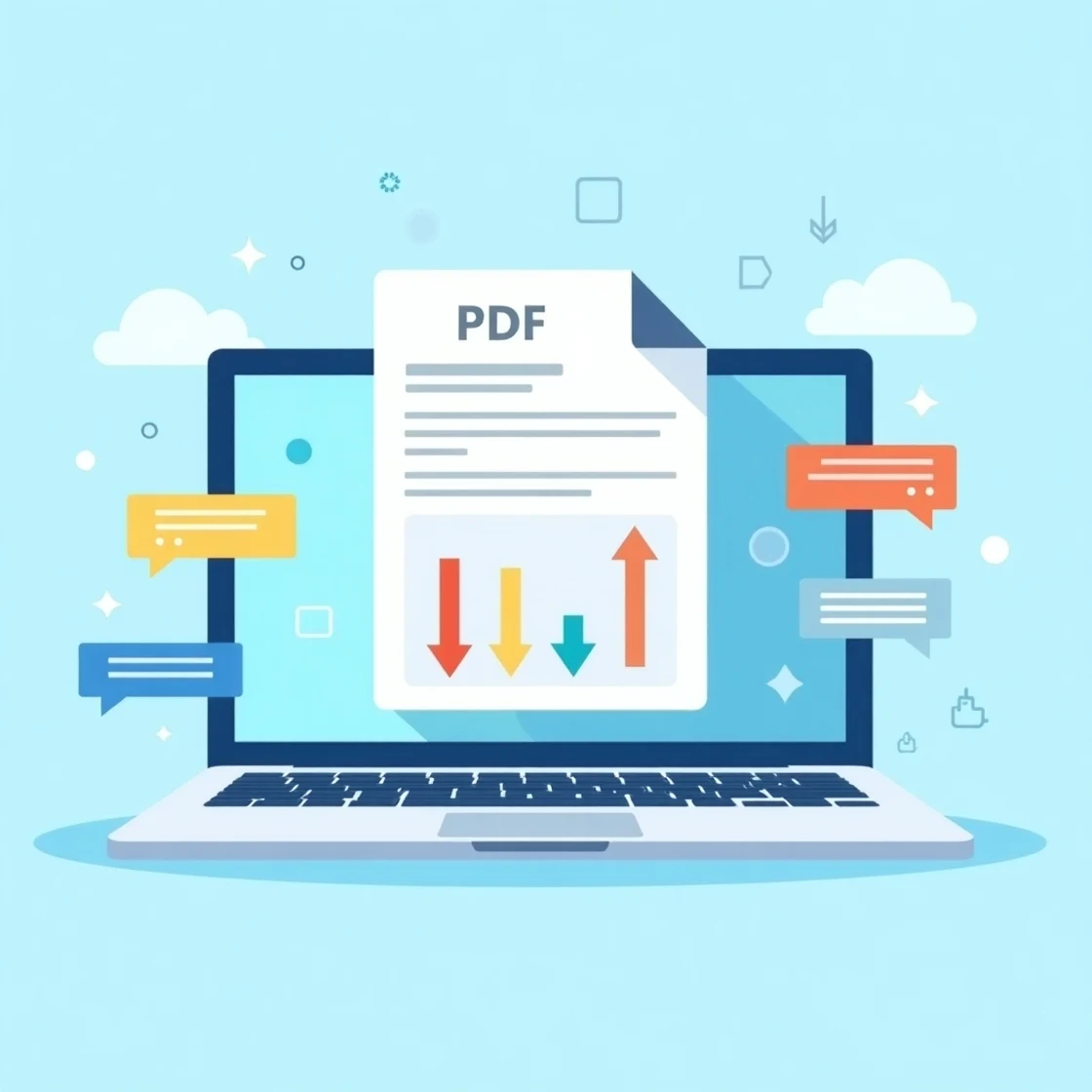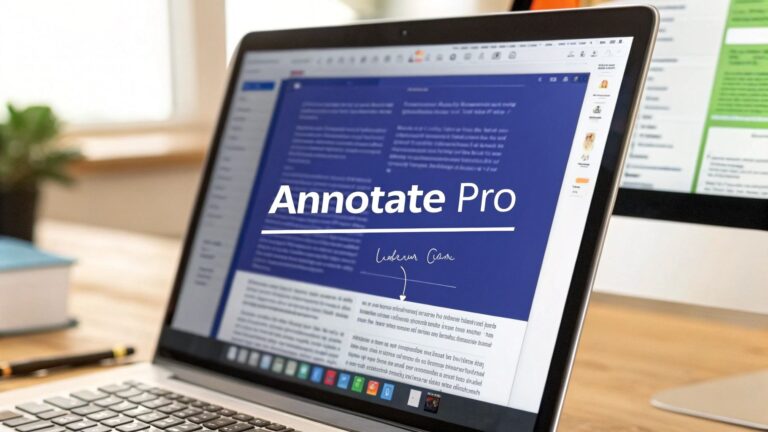When teams collaborate on documents, one tool often comes up as the unsung hero of smooth reviews: a reliable PDF annotation platform. PDFs remain the go-to format for proposals, reports, creative assets, and design drafts. But here’s the catch — emailing versions back and forth or leaving vague comments often leads to chaos, miscommunication, and delays. That’s why finding the best PDF annotation tool isn’t just about marking text; it’s about enabling clarity, speed, and accountability.
This is where BugSmash sets itself apart. More than just a tool to annotate PDFs, BugSmash acts as a complete review and feedback management solution for product, design, marketing, and QA teams.
Why PDF Annotation Matters More Than Ever
Think about how teams typically handle PDF reviews:
- Someone emails a draft.
- Multiple versions circulate.
- Comments get scattered across email threads or chat tools.
- A team member updates the file but misses a key suggestion.
The result? Confusion, wasted time, and frustration.
An effective PDF annotation tool eliminates this mess by:
- Centralizing all comments in one place.
- Allowing direct, visual feedback instead of cryptic notes.
- Keeping versions and discussions organized.
That’s exactly the gap BugSmash fills—bridging communication and execution without unnecessary noise.
What Makes BugSmash the Best PDF Annotation Tool?
BugSmash doesn’t just let you highlight or add sticky notes to a document. It redefines what PDF annotation should be in a modern workflow.
1. Seamless Visual Feedback
Instead of struggling with unclear instructions, teammates can point, click, and annotate directly on the PDF. Designers, content creators, and developers get exact feedback with no guesswork.
2. Faster Iterations
Annotations are actionable and instant. Teams don’t waste cycles decoding vague comments like “fix the thing on page 3.” Every note has context, making revisions quicker and cleaner.
3. Version Control Made Simple
BugSmash helps track changes across versions, so teams can compare old vs. new PDFs without losing sight of feedback history. No more “which file is final?” confusion.
4. Effortless Client-Friendly Reviews
Clients often find traditional feedback tools overwhelming. BugSmash solves this by allowing them to click a shareable link, annotate, and submit feedback—no login or technical learning curve required.
Who Benefits Most from BugSmash PDF Annotation?
BugSmash isn’t built for just one audience. Different teams use its PDF annotation features to solve unique problems:
For Product & Design Teams 🎨
- Highlight layout issues or misaligned elements directly.
- Compare different iterations side by side.
- Collect external client approval faster.
For Marketing & Content Teams 📢
- Refine ad copy, landing page drafts, or campaign briefs in PDF format.
- Centralize comments across multiple stakeholders.
- Speed up approvals without email ping-pong.
For Development & QA Teams 🛠️
- Annotate bug reports inside PDFs with screenshots and context.
- Prioritize fixes by tagging and assigning tasks.
- Test across devices and platforms while keeping annotations consistent.
For Project Managers & Team Leads 📊
- Get a bird’s-eye view of all PDF feedback.
- Assign responsibilities and track task completion.
- Keep clients, internal teams, and stakeholders aligned in one space.
Pain Points BugSmash Solves in PDF Reviews
✅ Scattered Feedback – All input lives in one centralized dashboard.
✅ Time-Consuming Reviews – Direct annotations cut back-and-forth cycles.
✅ Lack of Structure – Feedback is categorized, assigned, and trackable.
✅ Version Chaos – Side-by-side comparisons avoid duplication or missed edits.
By solving these real-world frustrations, BugSmash transforms PDF reviews into a smooth, fast, and transparent process.
How BugSmash Stands Apart from Other Tools
Most PDF annotation tools are either too basic (limited to highlights and text notes) or too complex (clunky enterprise software that slows teams down). BugSmash strikes the balance by being:
- Simple for clients (no training required).
- Robust for teams (task management, integrations, notifications).
- Versatile across formats (beyond PDFs, it works with websites, videos, mobile apps, and images).
This versatility is what makes BugSmash not just a good PDF annotation tool—but the best PDF annotation tool for teams who juggle multiple content types.
FAQs About BugSmash PDF Annotation
Q1. Is BugSmash only for PDFs?
No. While it excels at PDF annotation, BugSmash also supports websites, mobile apps, videos, images, and audio files—making it an all-in-one feedback platform.
Q2. Do clients need an account to review a PDF on BugSmash?
Not at all. They just click a shared link, annotate directly, and submit feedback—no login or setup required.
Q3. How does BugSmash handle version control for PDFs?
BugSmash automatically tracks changes, so teams can revisit older iterations, compare differences, and never lose context.
Q4. Can BugSmash integrate with tools we already use?
Yes. BugSmash integrates with Jira, Trello, GitHub, and Slack, ensuring feedback syncs seamlessly into your existing workflow.
Q5. What makes BugSmash different from traditional PDF editors?
Traditional PDF tools focus on editing or highlighting text. BugSmash goes further—it organizes, tracks, and manages feedback as part of a larger collaborative workflow.
Conclusion: The Best PDF Annotation Tool for Modern Teams
PDFs are here to stay, but old-school ways of reviewing them aren’t. Teams can’t afford scattered comments, confusing version histories, and endless back-and-forth emails.
BugSmash changes the game by combining powerful PDF annotation with centralized feedback management, seamless collaboration, and client-friendly sharing. It doesn’t just help mark up documents—it ensures feedback is clear, actionable, and productive.
For product teams, marketers, designers, QA specialists, and project managers, BugSmash isn’t just another annotation tool. It’s the best PDF annotation tool for teams that want to move faster, communicate better, and deliver with confidence.




